Choosing the best kitchen sink is more essential than ever. Why? Because it’s the true heart of modern kitchen design, perfectly balancing durability, style, and smart features. In 2025, advanced materials, cutting-edge finishes, and innovative accessories mean today’s kitchen sinks are built to be both stunning and tough enough for the demands of daily life. A new kitchen sink isn't just a utility; it's a statement piece that makes your daily routine smoother and more enjoyable.
At-a-Glance: 2025’s Best Kitchen Sink Options
- Quick Comparison Table: Instantly compare leading sink materials—stainless steel, granite composite, fireclay, and quartz—for durability, maintenance, and price.
| Material | Durability | Scratch Resistance | Maintenance | Price Point |
|---|---|---|---|---|
| Stainless Steel | High | Moderate | Low | $-$$ |
| Granite Composite | Very High | Very High | Low | $$-$$$ |
| Fireclay | Very High | High | Low | $$$-$$$$ |
| Quartz Composite | Very High | Very High | Low | $$-$$$$ |
- Visual Guide: Picture the top styles: sleek undermount sinks that create a seamless look with your countertops, classic farmhouse sinks with deep basins, multi-functional workstation sinks with built-in ledges, and easy-to-install drop-in sinks. Finishes now go far beyond simple chrome, with matte black, brushed gold, and even colored stainless steel becoming the new standard for a personalized kitchen.
In-Depth: Kitchen Sink Materials You Need to Know
What is the best kitchen sink material? The answer depends on your budget, style, and how you use your kitchen. This comprehensive table breaks down the most common kitchen sink materials so you can find the perfect one for your home.
Stainless Steel
One of the most common and practical choices, stainless steel kitchen sinks are known for their affordability, hygienic properties, and modern aesthetic. They’re lightweight and resistant to heat, making them ideal for high-traffic kitchens. Most models are made from T-304 stainless steel, which offers excellent corrosion resistance. However, they can show water spots and are susceptible to dents or light scratching, especially in thinner gauges. To reduce noise, choose a model with sound-dampening pads or undercoating.
Granite Composite
If you're after a modern, upscale look with exceptional durability, granite composite sinks are a top contender. Made from a blend of natural stone and resin, these sinks are non-porous, stain resistant, and available in a range of matte colors. Their hard surface resists heat, scratches, and chips better than most other options, making them perfect for busy families. However, they are typically more expensive than basic stainless models, and their rigid surface may break delicate dishes if dropped.
Fireclay
For those seeking a timeless, farmhouse aesthetic, fireclay sinks deliver both style and strength. These sinks are made by firing molded ceramic at high temperatures, resulting in a glossy, chip-resistant finish. They resist stains, scratches, and high heat. Their classic appeal makes them ideal for luxury or traditional-style kitchens. The trade-off is weight—fireclay sinks are heavy and require strong cabinet support, which can increase installation complexity and cost.
Cast Iron (with Porcelain Enamel Coating)
Cast iron sinks, coated in a layer of porcelain enamel, offer a classic look and deep, rich color that lasts for decades. Their smooth, glossy finish is durable and attractive. These sinks are perfect for traditional kitchen designs. That said, they’re extremely heavy—even more than fireclay—and if the enamel chips, the exposed iron can rust. Care must be taken not to drop heavy or sharp objects into the sink.
Quartz Composite
Quartz composite sinks are rising stars in the high-end kitchen sink market. Like granite composite, they blend natural quartz stone with acrylic resins, resulting in a durable, non-porous surface that resists stains, scratches, and impacts. Their matte, uniform appearance gives a sleek designer look, and they’re often available in subtle, contemporary colors. However, their rigid surface can be unforgiving to glassware, and their premium pricing may not suit every budget.
Copper & Brass
If you want a sink that makes a statement, consider copper or brass kitchen sinks. These are ideal for custom, rustic, or luxury kitchen designs. Not only do they have a warm, distinctive glow, but they’re also naturally antimicrobial and develop a unique patina over time. These sinks are usually handcrafted, making each one unique. However, they require special care to maintain their finish and are among the most expensive options available.
| Material | Best For | Key Pros | Potential Cons |
| Stainless Steel | All-around performance, easy care | Hygienic, affordable, modern, lightweight, heat-resistant | Can show water spots, may dent or scratch |
| Granite Composite | Modern style, busy families | Non-porous and stain resistant, super durable, sound dampening, color options | More costly than basic steel, hard surface may break dishes |
| Fireclay | Luxury, farmhouse, classic kitchens | Glossy finish, resists chips/stains/scratches, timeless style | Heavy, requires strong cabinet support, can be expensive |
| Cast Iron/Porcelain | Classic, traditional aesthetics | Long-lasting glossy enamel finish, deep color retention | Very heavy, enamel can chip from heavy or sharp objects |
| Quartz Composite | High-end, designer look | Uniform matte finish, very resistant to wear, non-porous | Stiff surface can break glassware, premium price point |
| Copper/Brass | Bold, custom, luxury designs | Naturally antimicrobial, develops a unique patina over time, eco-friendly | Needs special care to preserve finish, one of the most costly options |
- 2025 Trends: Homeowners are increasingly choosing matte and bold finishes to make their sink a design centerpiece. Sound-dampening technology, which reduces the noise of clanking dishes and running water, is now a standard feature in higher-quality sinks. Eco-friendly recycled materials are also in high demand.
- Smart Sinks: The future is here. Sinks with motion-sensor faucets, integrated water filtration systems, and even basins lit with LEDs are combining high style with incredible convenience for a cleaner, safer kitchen.

What Types of Kitchen Sinks Dominate in 2025?
The type of sink you choose affects both your kitchen’s workflow and its overall aesthetic. Here are the four dominant styles you need to know.
- Undermount Sinks: Installed from below the counter, these sinks have no visible rim, creating clean, uninterrupted lines. This makes wiping crumbs and spills directly from the counter into the sink incredibly easy. They are a perfect match for solid surface countertops like quartz, granite, or marble.
- Farmhouse (Apron-Front) Sinks: Once a hallmark of traditional kitchens, the farmhouse sink is now a versatile design element. Its iconic deep basin and exposed front panel make it a beautiful focal point. It's ideal for washing large pots and pans. Modern versions come in materials like fireclay, stainless steel, and granite composite for extra style and resilience.
- Workstation Sinks: A game-changer for serious home cooks. These sinks feature built-in ledges that hold custom-fit accessories like cutting boards, colanders, and drying racks. This transforms the sink area into a comprehensive prep station, saving valuable counter space and making multitasking a breeze.
- Drop-In (Top-Mount) Sinks: This is the classic, budget-friendly option. The sink is dropped into a pre-cut hole in the countertop, with the rim resting on top. It’s the easiest type to install and works with almost any countertop material, including laminate. Today, they are available in a wider variety of styles and finishes than ever before.

Best Rated Kitchen Sinks (2025 Ranking)
To identify the best kitchen sinks, we analyzed expert reviews, user ratings, and real-world feedback. Instead of focusing on specific brands, we ranked the top categories of manufacturers to help you understand where to look for quality.
| Manufacturer Specialty | Signature Style | Notable Features | Warranty Outlook | Unique Strength |
| Innovative Steel Specialists | Workstation & Undermount | Sound-dampening pads, T-304 stainless steel, R10 corners | Limited Lifetime | Premium construction and advanced finish options. |
| Luxury Fireclay Artisans | Classic Apron-Front | Handmade craftsmanship, thick walls, unique glazes | 10 Years to Limited Lifetime | Unmatched heritage look and design variety. |
| Durable & Varied Leaders | All Styles (SS, Cast Iron) | Consistent performance, wide style range, trusted history | Limited Lifetime | Reliable performance across different materials and price points. |
- How We Ranked: Our analysis combined expert reviews from architectural and design publications, thousands of user ratings from home improvement forums, and feedback from professional kitchen installers.
- Fact: Stainless steel sinks still hold the largest market share in the U.S. However, granite composite sinks and quartz composite sinks are the fastest-growing segments, especially for a kitchen remodel and new construction projects.
Proven Performance: Real-World Tests & Homeowner Reviews
How do these sinks really perform? We looked at side-by-side tests and gathered homeowner feedback to see what holds up to daily life.
- Lab Test Insights: In scratch and stain resistance tests, granite composite and quartz composite came out on top. They showed virtually no marks from knives or discoloration from coffee and wine. Fireclay also performed exceptionally well against stains and heat. While stainless steel can get minor scratches and dings, many can be buffed out.
- Installer Insights: Kitchen professionals often recommend undermount sinks made of granite composite or 16-18 gauge stainless steel. They praise their durability and the seamless look they create. For farmhouse sinks, installers stress the importance of proper cabinet support for heavy materials like fireclay and enameled cast iron.
- User Polls: We surveyed homeowners who recently completed a kitchen remodel. The results were clear: easy to clean and low maintenance were the top priorities. Granite composite and stainless steel consistently ranked highest for overall satisfaction, proving that the best kitchen sink is one you don't have to worry about.
How to Choose the Best Kitchen Sink: Other Key Factors
Before you start looking at styles, getting the basics right is essential. The perfect sink needs to fit your space, your lifestyle, and your plumbing.
Measuring for Fit: A Step-by-Step Guide
Incorrect measurements can stop a kitchen remodel in its tracks. To avoid this, follow these simple steps:
- Measure Your Cabinet Base: Open the cabinet doors beneath your sink. Measure the interior width from left to right. This is the maximum width your sink bowl can be. A common rule is to subtract 2-3 inches from the cabinet width to find your maximum sink size. For a 36-inch cabinet, you should look for a sink no wider than 33 inches.
- Check the Countertop Cutout (for replacement sinks): If you are replacing an existing sink, measure the length and width of the hole in your countertop. For a top-mount sink, your new one must be the same size or larger. For an undermount, measure the sink itself, not the cutout.
- Determine Sink Depth: Consider how you use your sink. Deep bowls (9-10 inches) are great for hiding dirty dishes and washing large pots. A shallower bowl (7-8 inches) may be more comfortable for those with back pain. Don't forget to measure the vertical space inside your cabinet to ensure the new sink and its plumbing will fit.

Usage Scenarios
How will you use your sink? The answer dictates the best type and material for your home.
- Busy Family Kitchens: These spaces see heavy traffic, from washing hands to cleaning up after big meals. Durability and ease of cleaning are top priorities. A large single bowl or a double bowl sink made of stainless steel or granite composite is often a great choice.
- Gourmet and Avid Cooks: If you love to cook, you need a sink that can keep up. A deep, wide basin is perfect for washing large stockpots and sheet pans. A workstation sink with integrated accessories can turn your sink into a prep station.
- Entertaining and Bar Areas: A smaller, secondary sink for a bar or island can make entertaining a breeze. Here, style might take precedence, with materials like polished copper or sleek composite making a statement.
- Laundry and Utility Rooms: These sinks need to be tough. They handle everything from soaking stained clothes to washing paintbrushes. A deep, utilitarian sink made of durable cast iron, composite, or heavy-gauge steel is ideal.
Plumbing & Space Constraints
Look under your current sink. What do you see?
- Under-Cabinet Space: Is there a garbage disposal? A water filtration system? All these things take up room. When choosing your sink depth, ensure there is enough clearance below for the drain, p-trap, and any other equipment.
- Garbage Disposal Fit: Most disposals fit standard 3.5-inch drain openings, but a very deep sink bowl can lower the disposal, potentially creating plumbing slope issues.
- Faucet Clearances: Consider the faucet you plan to use. A tall, gooseneck faucet needs clearance, especially if there’s a window or shelf behind the sink. The number of holes in the sink deck must also match your faucet and accessory needs (e.g., sprayer, soap dispenser).
Budget Breakdown
Your new kitchen budget will influence your choice. Here’s what to expect.
- Economy: $100–$350: In this range, you'll find basic top-mount stainless steel sinks, porcelain, and some solid surface options. They are functional but may use thinner-gauge steel or be more prone to damage.
- Mid-Range: $350–$750: This is the sweet spot for value and quality. You’ll find high-quality undermount stainless steel sinks, many granite composite models, and some entry-level fireclay options.
- Luxury: $750–$2,000+: This tier includes designer fireclay and cast iron sinks, custom copper sinks, and feature-rich workstation models made from premium materials.
When shopping, always buy from authorized dealers to ensure you receive a valid warranty and good customer support.
Matching the Best Kitchen Sink to Your Space
Feeling overwhelmed? Let’s simplify the process of choosing a kitchen sink material and style for your specific layout.
Expert Decision Tree: Answer these questions to find your match.
- What countertop material do you have? For stone or solid surfaces like quartz, an undermount sink is ideal. For laminate, a drop-in sink is the best choice.
- How much do you cook? If you spend a lot of time prepping food, a workstation sink will revolutionize your workflow. For simpler needs, a standard single or double basin will suffice.
- What is your kitchen's style? A fireclay farmhouse sink is perfect for a classic or modern farmhouse kitchen. A sleek stainless steel or quartz composite sink fits perfectly in a contemporary space.
- How large are your pots and pans? A deep, single-basin sink is excellent for washing large items without splashing water everywhere.
Installation Tips: Before you buy, measure your cabinet base. The cabinet must be at least 2-3 inches wider than your sink to ensure a proper fit. For heavy sinks like cast iron or fireclay, confirm your cabinetry can support the weight.
Pro Gallery: Imagine a gallery of real kitchens. You'd see how a matte black undermount sink creates a dramatic contrast with a white quartz countertop. Or how a copper farmhouse sink becomes the warm, inviting focal point of a rustic kitchen. Visualizing these pairings can help you make a confident choice.
Spotlight: Luxury & Emerging Kitchen Sink Trends
The modern kitchen sink is more than just a place to wash dishes. It’s an appliance packed with features and designed for personalization.
Luxury Features: Workstation sinks are leading the luxury trend. Their integrated ledges that hold cutting boards, colanders, and drying racks are a must-have for high-end kitchens. Other coveted upgrades include sinks made from thick 16-gauge stainless steel and designs with tight-radius corners for a sharp, modern look.
Sustainability: Green design is a major factor. The best kitchen sink choices now include options made from recycled materials, like stainless steel (which is often comprised of 80% recycled content). Materials like fireclay and granite are also considered sustainable due to their incredible longevity, reducing the need for replacement.
Personalization: Your sink should reflect your style. With colored stainless steel (in gold, brass, or gunmetal tones) and custom apron-front designs, the sink has officially moved from a utility item to a core design element.
Maintenance & Care: Keep Your New Sink Pristine
One of the most important factors is finding a sink that is easy to keep clean. Here’s how to care for the most popular materials using simple methods.
Stainless Steel: The easiest to maintain. Clean daily with mild soap and water to prevent mineral deposits. For a deeper clean, make a paste of baking soda and water, gently scrub in the direction of the grain, rinse, and wipe dry. Avoid abrasive steel wool pads, as they can scratch the surface.
Granite/Quartz Composite: This material is non-porous, so it naturally resists stains. Simply wipe it down with a soft sponge and gentle soap and water. Avoid harsh chemicals or abrasive scrubbers to maintain the uniform color and smooth texture.
Fireclay & Cast Iron: The glossy enamel finish is tough but needs protection. Use non-abrasive cleaners and soft cloths. Avoid dropping heavy pots or sharp utensils into the sink to prevent chipping or scratching. A sink grid placed at the bottom of the sink is a great way to add protection.

Toolkits & Resources
- Sink Selector Quiz: Imagine a quick quiz: answer five questions about your cooking habits, kitchen style, and budget to get a personalized recommendation for your perfect kitchen sink.
- Downloadable Checklist: A simple, one-page checklist to take with you when shopping. It would include sections for measuring your cabinet base, noting your countertop material, and listing your must-have features.
- Further Reading: For deeper research, exploring guides from sources that test building materials or offer home improvement standards can provide added confidence.
Conclusion: Finding Your Best Kitchen Sink in 2025
In 2025, the best kitchen sinks beautifully combine bold style, lasting strength, and the latest technology for a cleaner, more efficient kitchen. Stainless steel and granite composite lead the way for their balance of performance and aesthetics, while fireclay and quartz deliver on luxury and high-end design. The perfect choice for your kitchen sink for your home will depend on your family's habits, your countertop material, and your design vision. Because your kitchen deserves a sink that is both beautiful and built to last.
Upgrade to a 2025 kitchen sink that marries function, trend, and value—transforming your kitchen into the standout space you use and love every day.
FAQ
1. What type of kitchen sink is most durable?
The three sink materials which offer the highest durability are granite composite, quartz composite and fireclay sinks. These sinks offer excellent resistance to scratches, chips, stains and heat which makes them an excellent long-term choice for a busy kitchen.
2. Which is better, a quartz or a stainless steel sink?
How to choose depends on which you prefer. Quartz composite sink that is called an anti-manufacturing, dishwashing water can be absorbed by the sound of a lot of it, and the color from beginning to end are the same, looking at a particularly modern, upscale, to the kitchen a load like a self-contained sense of seniority filter. Stainless steel sink, the price is more affordable, move up is not difficult, just how to bump are difficult to break, is used for a long time may leave a little scratches, water stains are also easy to show, but wipe and can be bright, each with its own advantages.
3. What are the disadvantages of quartz sinks?
Quartz sinks do have shortcomings. First of all, the price is much more expensive than stainless steel. It is too hard, if the glass, plate accidentally slipped into, basically is broken, with extra care. Although the color and style look quite a lot, but ultimately are manufacturers set, want to find a unique style, the possibility is not as flexible as stainless steel sinks.
4. What type of sink is most scratch resistant?
To say that the most scratch-resistant sink materials on the market now, granite composite and quartz composite is definitely a tough role. They mix natural stone and acrylic resin together, do a good job of the sink is like wearing a layer of protective armor, usually scratch with a knife, pots and pans are not afraid of bumping, even if every day in the kitchen, the surface is difficult to leave traces, proper durability bear!
5. How do I choose a sink for my countertop style?
If the home is installed in the quartz or granite countertops such as solid, choose the undercounter sink is right - high value, not to mention the smooth lines like tailor-made, clean up is more worrying, the water on the countertops on a wipe all slipped into the trough. But if the laminate flooring material countertops, you must install embedded sinks, it can protect the fragile edge of the countertop up, so that water stains do not seep into the edge of the bubble bad, both practical and can extend the life of the countertops, a proper caring housekeeper!

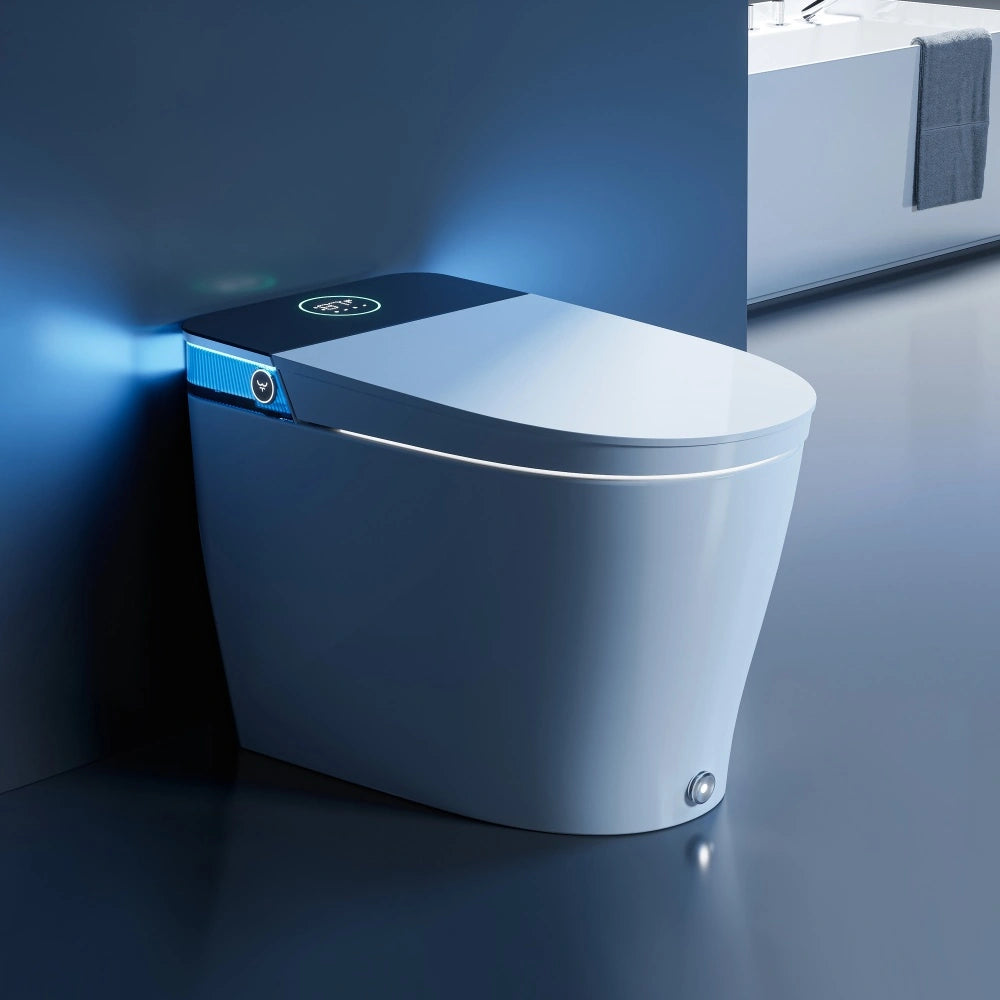
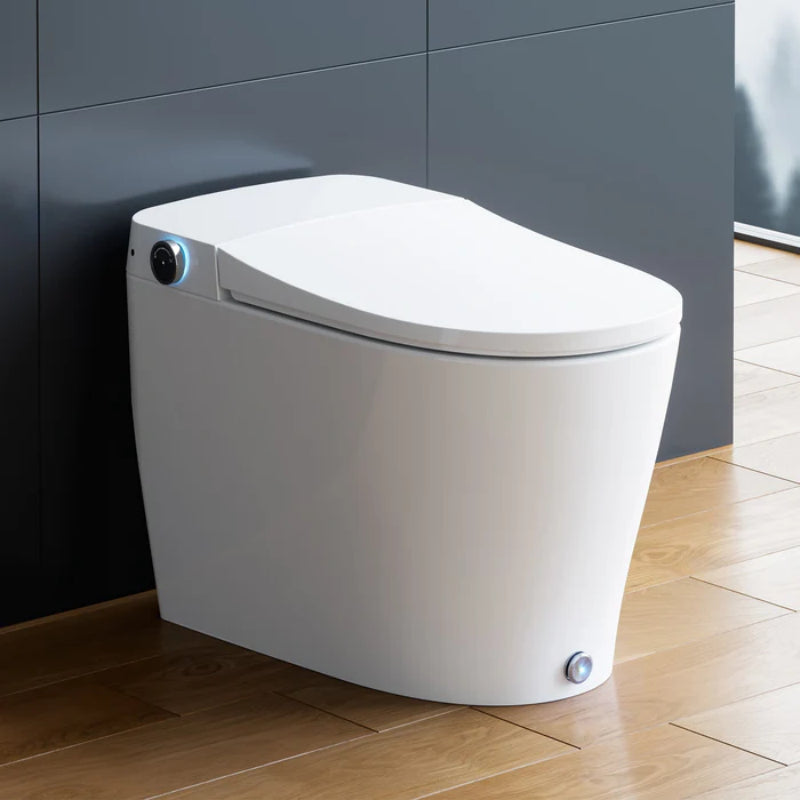
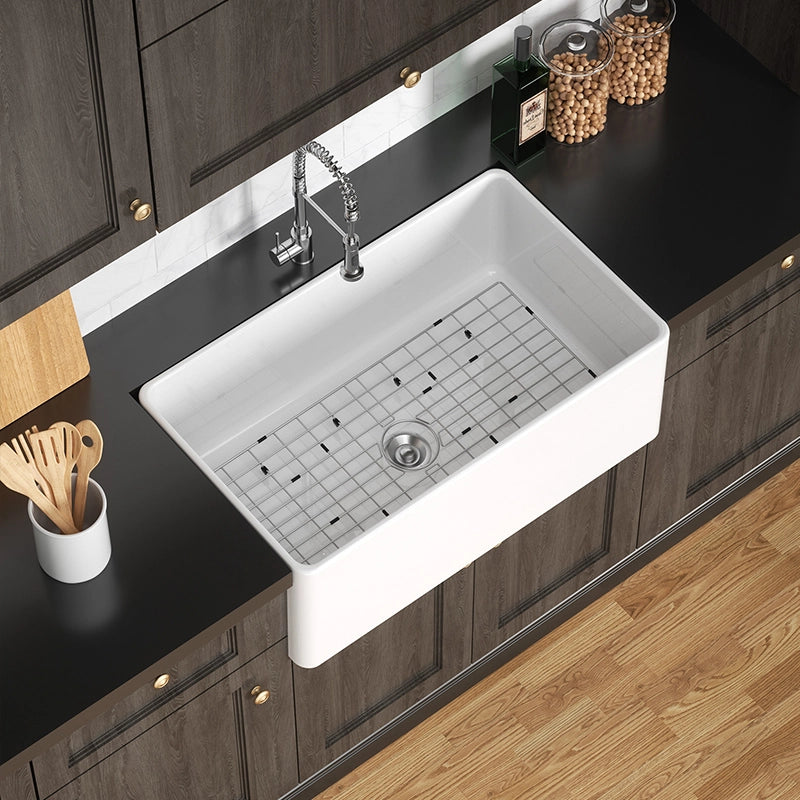
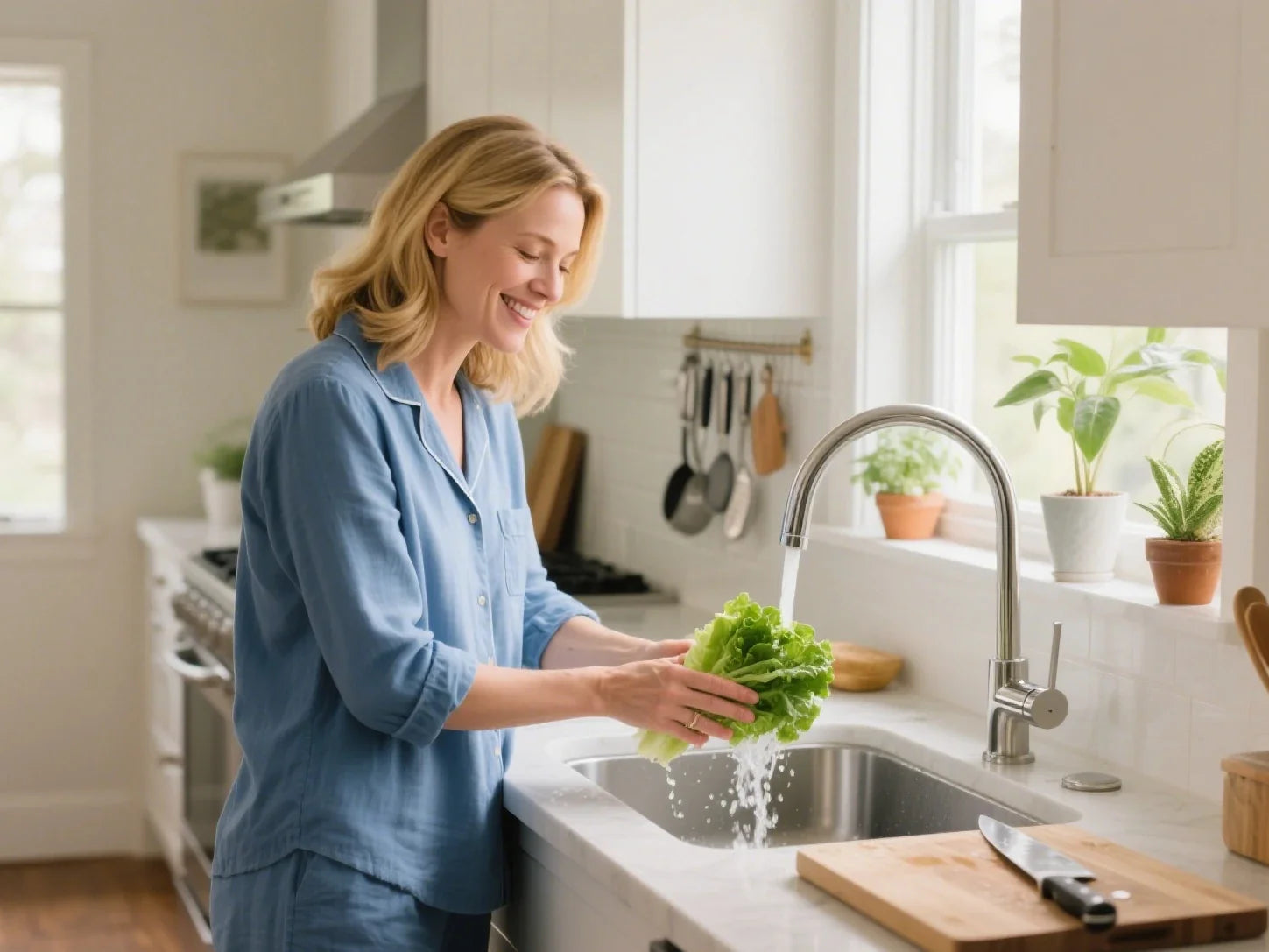
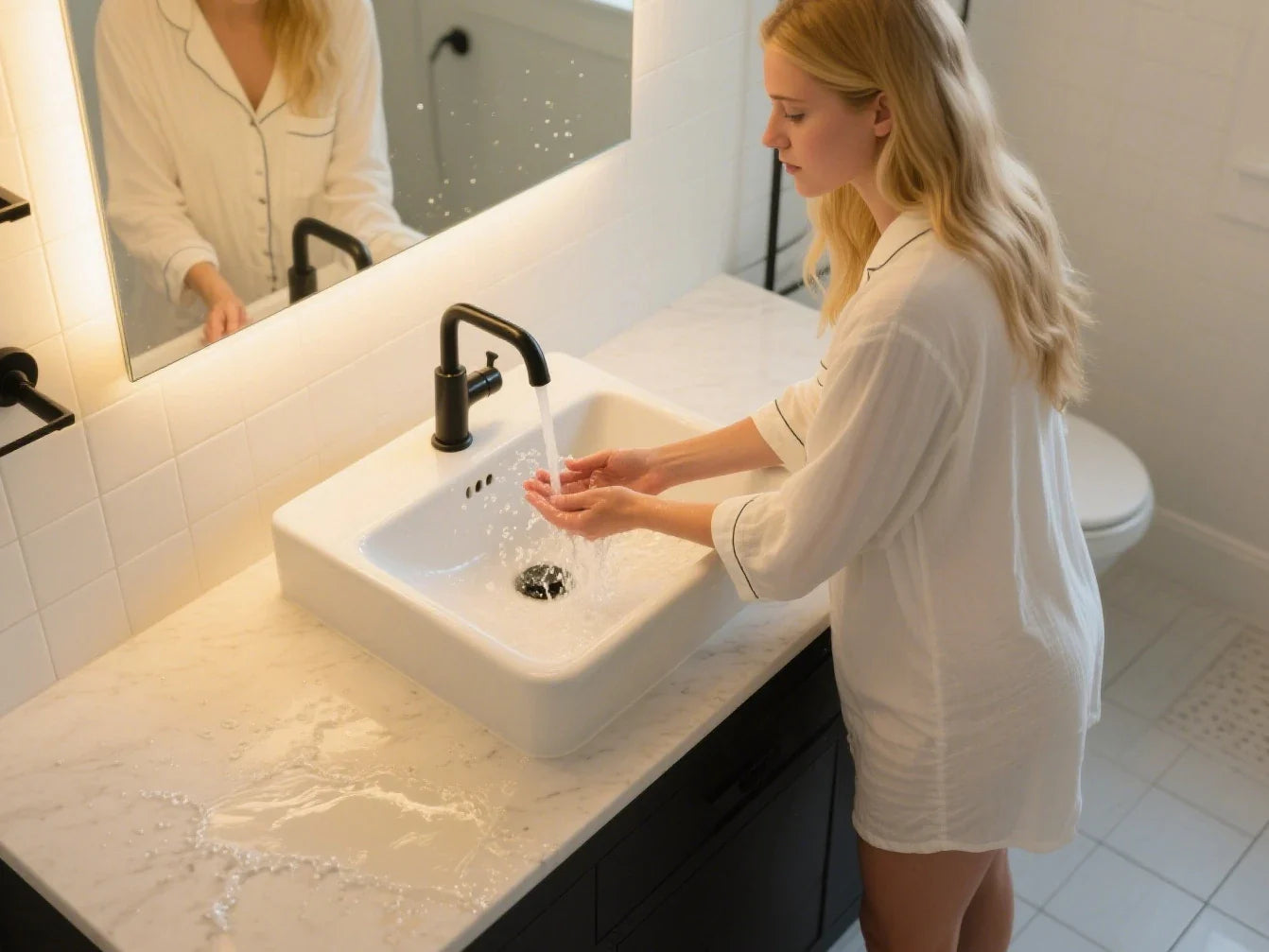
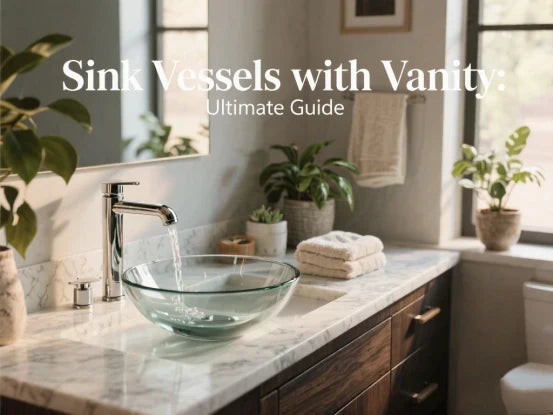

Leave a comment
This site is protected by hCaptcha and the hCaptcha Privacy Policy and Terms of Service apply.